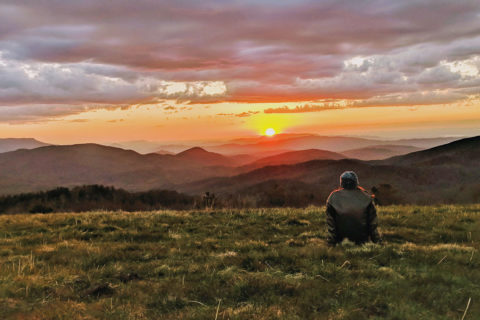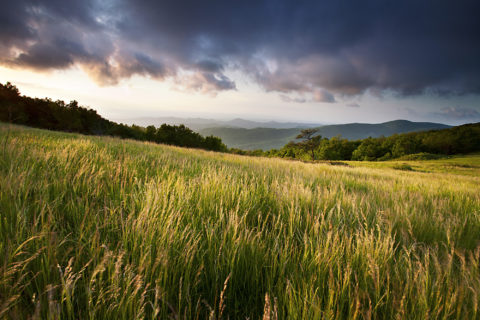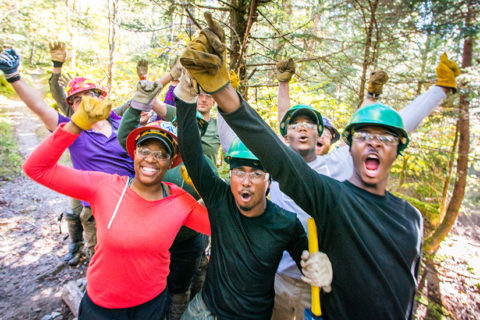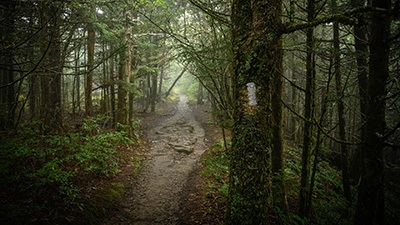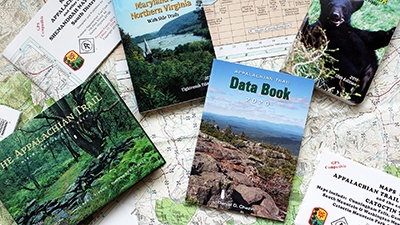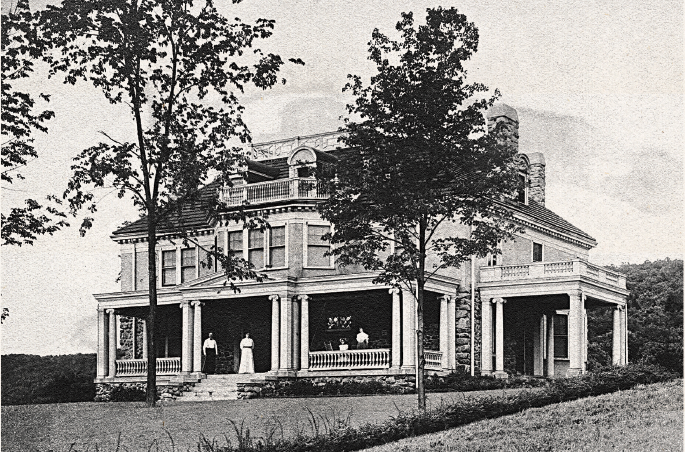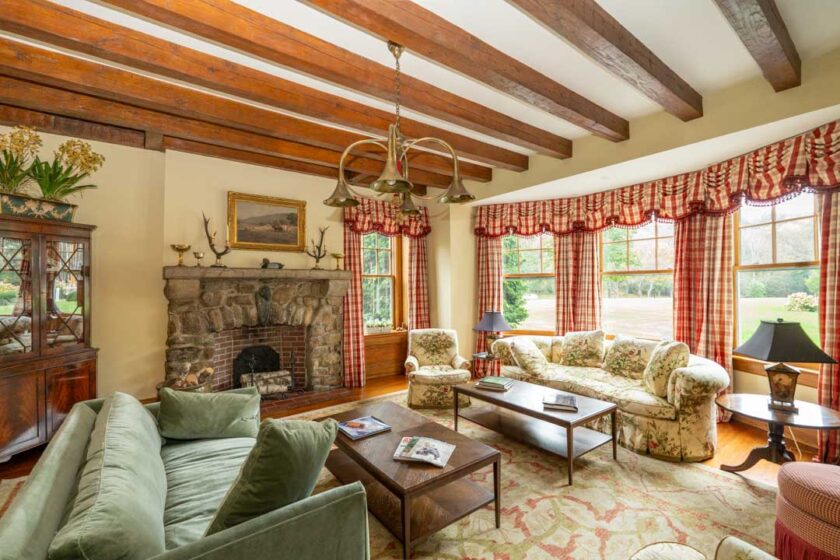Where the A.T. Began
January 24, 2024
Sometimes the places that we visit for only a short amount of time — whether on vacation, or for work, or for a family wedding or reunion — can have a disproportionate impact on the trajectory of our lives. Because you’re reading this article, the Appalachian Trail may likely be one of those places for you. Perhaps it was a weeklong scouting trip in the Smokies while in middle school, or a two-day backpacking trip in the White Mountains with friends during college. Perhaps it was an afternoon walk along the Trail through Harriman State Park after a business trip to New York. Whatever inspired your lifelong love of the A.T. may have been just a few moments of time in a life filled with work and family commitments.
For Benton MacKaye, the visionary founder of the Appalachian Trail, it was a visit to northern New Jersey in the summer of 1921 that changed the course of his life. That summer, MacKaye was grieving his wife, Betty, who had died from suicide in New York City in April. A friend invited him to come stay with him at a small farm he had recently purchased near Mt. Olive, New Jersey. That friend was Charles Harris Whitaker, an architect and editor of the Journal of the American Institute of Architects (AIA).
MacKaye had already begun musing about a trail from Maine to Georgia through the Appalachian Mountains. He later said he first came up with the idea on a hike up Stratton Mountain in Vermont in July 1900. But it was while staying with Whitaker, far from the noise and distractions of city life, and at his friends’ urging, that he put pen to paper and started sketching out his ideas in writing.

Clarence Stein (left) and Benton MacKaye in 1964. Courtesy of ATC Archives
Intrigued by what he read of MacKaye’s ideas, Whitaker arranged for a meeting with Clarence Stein, a fellow architect and urban planner. The place Whitaker chose for the three men to meet was Hudson Guild Farm in nearby Netcong, New Jersey. Understanding his selection of venue requires a brief foray into the history of the settlement house movement.
Being a Good Neighbor
Settlement houses originated in England in the 1880s in response to problems caused by industrialization, immigration, and the rapid growth of cities. A group of British university students opened the first settlement house in London’s East End, believing that by living among poor people they could promote cross-cultural understanding and break down barriers between social classes. The movement quickly spread across the ocean, where settlement houses began popping up in the major metropolitan areas of New York, Chicago, and Los Angeles.
In the late 1890s, Dr. John Lovejoy Elliott established Hudson Guild, a settlement house in the Chelsea neighborhood of Manhattan. In recent years, the neighborhood had seen an influx of immigrant families from Ireland, Italy, Germany, and Greece, as well as African Americans who were fleeing the South. The new arrivals found jobs in the shipyards and factories along the Hudson River and lived in poorly built tenement buildings or rooming houses nearby. The increase in population density and poor sanitary conditions soon heightened underlying problems of disease, hunger, and crime.
Elliott had met Jane Addams, the founder of Hull-House in Chicago, a few years before and was deeply moved by what settlement houses were striving to accomplish. In Chelsea, he organized a social and recreation club for young men, which was quickly followed by clubs and programs for other groups including children and working women. “Our fundamental purpose is to help people help each other and themselves,” Elliott said about the primary aim of these programs.
In the following years, Hudson Guild established the first free kindergarten in New York City and offered vocational training, athletic programs, healthcare services, and summer outings to nearby parks and campgrounds. Some 20 years after its founding, the guild bought a property in northern New Jersey to enable city children to learn about farming and enjoy traditional camp activities. The goal was not to make “farmers out of city folks,” Elliott later clarified, in an interview with the New York Times, but to enable people to “learn about how things grow and about other mysterious things that happen in the country, concerning which city people know so little.”
From Farm to Trail
The New Jersey property acquired by the Hudson Guild in 1917 consisted of 500 acres and included a working farm, three farmhouses, and an estate house built by New York architect Clarence Curter. In addition to the activities provided for the settlement house residents, Hudson Guild Farm hosted meetings and conferences on a variety of topics of interest to the progressive movement: education, universal suffrage, workers’ protections, corporate regulation, and environmental conservation.
It is undoubtedly Hudson Guild Farm’s reputation as a place for airing and debating big ideas that prompted Charles Whitaker to choose it as the backdrop for the meeting he facilitated with Benton MacKaye and Clarence Stein about the former’s ideas about a recreation project involving an Appalachian Trail. Stein had designed some buildings on the farm and so was already familiar with the location.
On Sunday, July 10, 1921, the three men met — in the “room where it happened,” to quote Lin-Manuel Miranda’s lyrics from Hamilton — and emerged after Whitaker agreed to publish an article by MacKaye in the AIA journal, and Stein agreed to help promote the idea through his professional circles.
The significance of the meeting is hard to overstate. MacKaye’s biographer, Larry Anderson, wrote in his 2002 book that the July 1921 meeting “launched the Appalachian Trail.” MacKaye himself, reflecting on the meeting some 50 years later, wrote to the ATC chairman at the time, Stanley Murray:
“On that July Sunday half a century ago, the seed of our Trail was planted. Except for the two men named, it would never have come to pass.”
A Century of Giving
Hudson Guild still exists today, continuing to serve Chelsea and the greater West Side neighborhood of Manhattan. It provides social services, physical and mental healthcare, and other programs to some 25,000 people annually. The guild no longer owns the property in New Jersey, having decided some 30 years ago that owning a farm was no longer necessary to accomplish its mission. In the late 1990s, businessman and philanthropist Peter Kellogg led a group that purchased the farm property and some additional land. The Hudson Farm Club now operates as a private year-round outdoor experience for its members.
The tradition of social welfare is alive and well at Hudson Farm Club and its associated foundation. Twice a year, the club organizes a hike on its grounds for over a thousand residents of nearby communities to enjoy the scenic beauty and wildlife sightings. The hike is one of several fundraising activities that benefit local charities and public service organizations. This fall’s hike, for example, benefited local fire, police, and emergency response units as well as the county’s schools, youth sports and organizations, and neighborhood food pantry, among other social causes.
The hikes typically raise from $50,000 to $150,000 — depending on the turnout (and the weather) — but the donations are only part of the point. “The greatest reward is the community coming together and working towards a common goal of completing the hike,” said Sharon Leon, the volunteer organizer of the fall hikes on the Byram township side of the grounds.
One can only imagine that Dr. John Lovejoy Elliott, who established Hudson Guild as part of his lifelong experiment in “neighborliness,” would approve.
And so it happened that a brief sojourn in New Jersey — a mere couple of months in a lifetime that lasted 96 years — changed the course of MacKaye’s life. Just as the Trail that he envisioned has had a transformative effect on the lives of all who spend even only a few hours appreciating its many wonders.
This article was originally published in the Fall 2023 edition of A.T. Journeys magazine. Become a member today to help fund great storytelling about the Appalachian Trail, its history, and the community of doers and dreamers that ensure the Trail is protected forever, for all.

